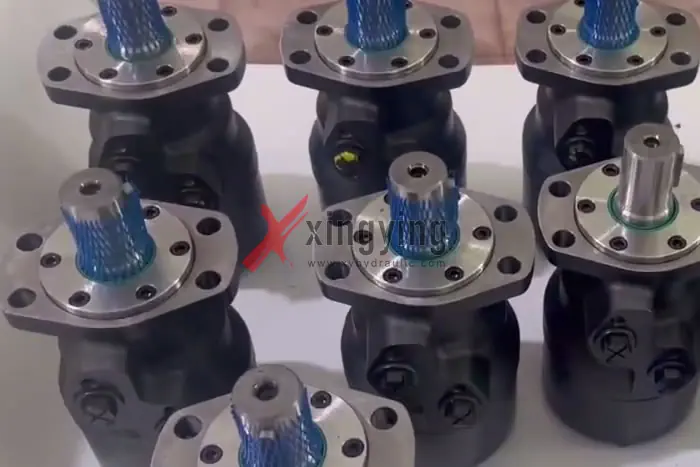Minimizing Pressure Energy Loss in Hydraulic Motors: A Comprehensive Guide

Reducing Pressure Energy Loss in hydraulic motors: A Technical Analysis
Hydraulic Motors play a crucial role in converting hydraulic energy into mechanical energy.
However, pressure energy loss during this conversion is a significant concern.
Minimizing these losses is essential for improving overall system efficiency.
This article delves into the technical aspects of reducing pressure energy loss in hydraulic motors.
Internal Structure Optimization
Reducing pressure energy loss starts with optimizing the internal structure of the hydraulic motor:
Integrated Circuit Channels: Implementing integrated circuit channels minimizes internal pressure energy loss and reduces power loss.
This approach streamlines the flow of hydraulic fluid, reducing friction and energy dissipation.
Minimizing Throttling Losses: Reducing throttling losses is crucial.
This involves minimizing unnecessary overflow and avoiding the use of throttling systems for flow and pressure regulation whenever possible.
Alternative methods for controlling flow and pressure should be explored to reduce energy waste.
Material Selection and Maintenance
Material selection and regular maintenance also play vital roles in minimizing energy loss:
Advanced Seal Materials: Utilizing modern sealing materials reduces friction losses.
These materials offer improved sealing performance and durability, minimizing leakage and maximizing energy transfer.
Regular Maintenance: Consistent maintenance is essential for extending the lifespan of the hydraulic motor and preventing unnecessary losses.
This includes regular inspection, Cleaning, and replacement of worn parts.
Contamination Control: Identifying and addressing contamination is crucial.
Implementing new contamination testing methods allows for online measurement and timely intervention.
This proactive approach prevents contamination-related damage and ensures optimal performance.
Collaboration between manufacturers and users is vital for effective contamination control.
Further Considerations
Beyond the above, several other factors contribute to pressure energy loss:
System Design: The overall Hydraulic System design significantly impacts energy loss.
Optimizing pipe diameter, minimizing pipe length, and reducing the number of bends and fittings can reduce flow resistance and pressure drop.
Fluid Selection: The type of hydraulic fluid used affects viscosity and flow characteristics.
Selecting a fluid with appropriate viscosity for the specific application can minimize friction and energy loss.
Operating Conditions: Operating conditions such as temperature and pressure also influence energy loss.
Maintaining optimal operating conditions can improve efficiency.
Conclusion
Reducing pressure energy loss in hydraulic motors requires a multi-faceted approach.
Optimizing internal structure, using advanced materials, implementing regular maintenance, and controlling contamination are all essential steps.
Furthermore, considering the overall system design, fluid selection, and operating conditions can further enhance efficiency.
By implementing these strategies, manufacturers and users can work together to minimize energy waste and maximize the performance of hydraulic motors.
Why Choose XingYing Hydraulic as Your Supplier?
1.Direct from Manufacturer: Benefit from competitive pricing on top-quality hydraulic products, sourced directly from our factory in China.
2.Custom Solutions: Our expertise allows us to tailor hydraulic components to your precise requirements, ensuring optimal performance.
3.Reliable Supply: Count on us as your trusted supplier for consistent quality and timely delivery, backed by our reputation in the industry.